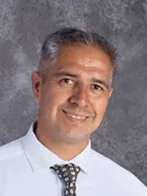Rural district puts grading practice to the equity test
Equity Corner
January 20, 2020

As educational leaders, we are responsible for providing meaningful and long-lasting professional development opportunities for our teachers and support staff. In Shasta County, we have utilized our Reach Higher Shasta consortium to facilitate professional development around one key area for improvement: equity in grading.
Reach Higher Shasta is a consortium of high school and elementary school districts that are working toward a common goal of increasing student achievement. Some of the initiatives the consortium is working on include attendance and barriers to accessing educational opportunities. Our consortium is also instrumental in providing and facilitating professional development opportunities for all educational professionals, from teachers, counselors, and administrators.
This past spring, we started looking at grading equity and how we could address some of the systemic issues we encounter in grading practices. Joe Feldman, author of the book “Grading for Equity,” has been our consultant and guide as we have taken on this overdue endeavor. We started with an initial meeting that had representation from the full continuum of our county’s K-12 educators, including teachers, counselors and administrators.
For a county that is rural and geographically diverse, a room full of eager participants was a testament to the commitment and awareness that our educational professionals have in addressing grading inequities. As Joe touched on the many areas where inequities show up in our traditional practices, it was clear that this was a worthwhile endeavor that would positively affect all of our students. One of his suggestions that helped ease the concern and anxiety about some of the changes was to choose one grading practice to explore and change. Small, safe steps are what some needed to start on this journey of creating equitable grading practices in their classrooms.
Follow-up meetings centered on action research presentations made by each participating teacher. Seeing the diversity of ideas and teacher efficacy at play was refreshing and encouraging. These teacher leaders and equity warriors were eager to share the strategies they had tried in their classrooms. The presentation of these mini-action research projects showed how a few minor changes could address some of the inequities that exist in common grading practices. More importantly, educators from the full K-12 continuum were able to see how different strategies worked for different teachers in various subject areas and grade levels. The apprehension some had about utilizing a strategy, such as no zero policies, retakes, or flexible assessments, was reduced when they were able to see how these strategies gave hope to students that otherwise may have given up. Feedback from participants was positive; many expressed how they felt energized and empowered to continue the work of evaluating their grading practices and putting them to the “equity test.”
Equitable practices are as much about supporting our students as it is our teachers. Professional development and other supports that are needed by teachers vary much like the supports and differentiated instructional strategies our students need. Differentiated professional development is something we should not lose sight of as we have a duty and responsibility to adapt to the needs and skillsets of our staff.
With a new year, educational leaders have to continue in our resolve to do better for all students and provide the necessary equitable professional development for our teachers and support staff. Are you ready to do the hard work that is required?
Leopoldo Perez is principal of Shasta High School in the Shasta Union High School District and the Region 1 representative on ACSA’s Equity Committee.


